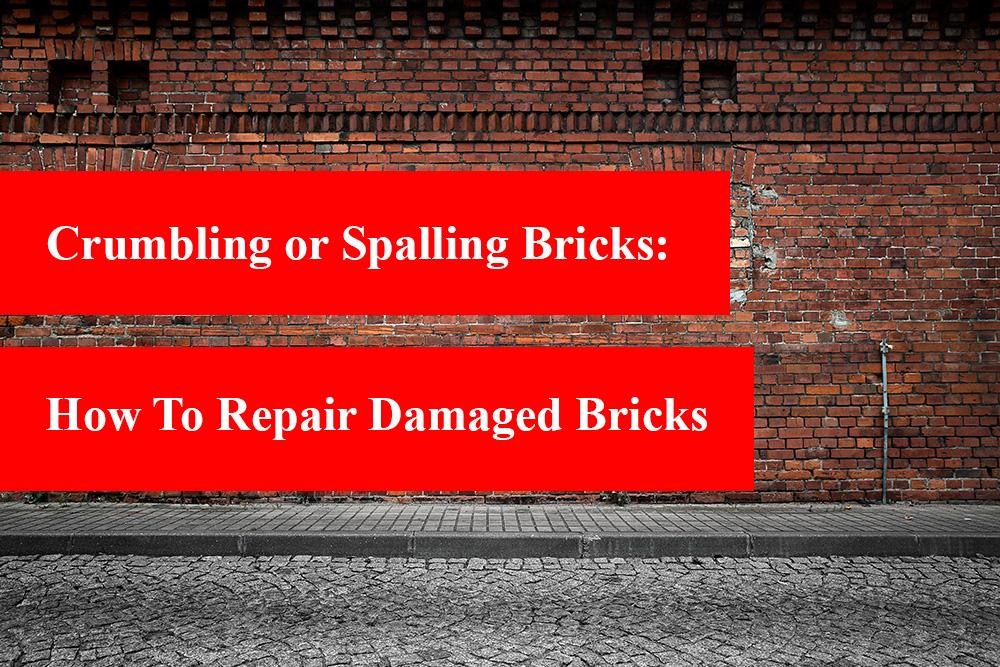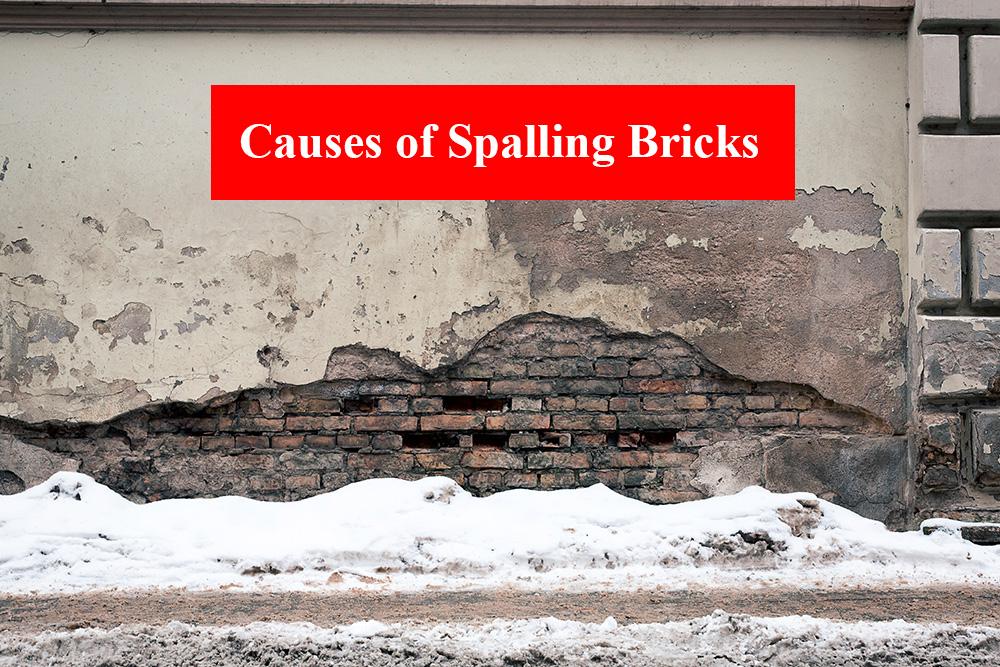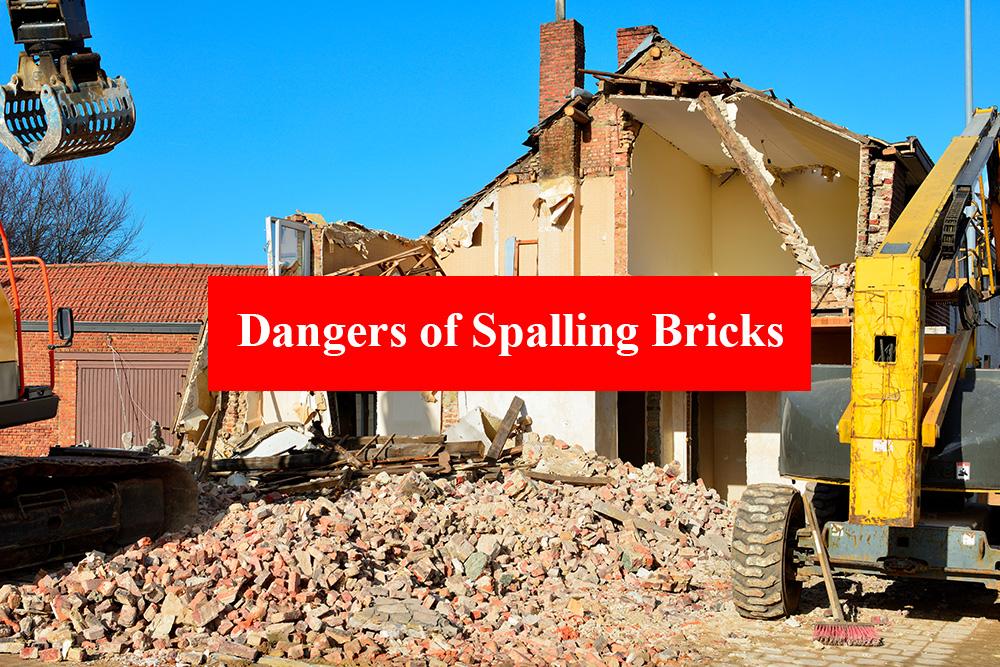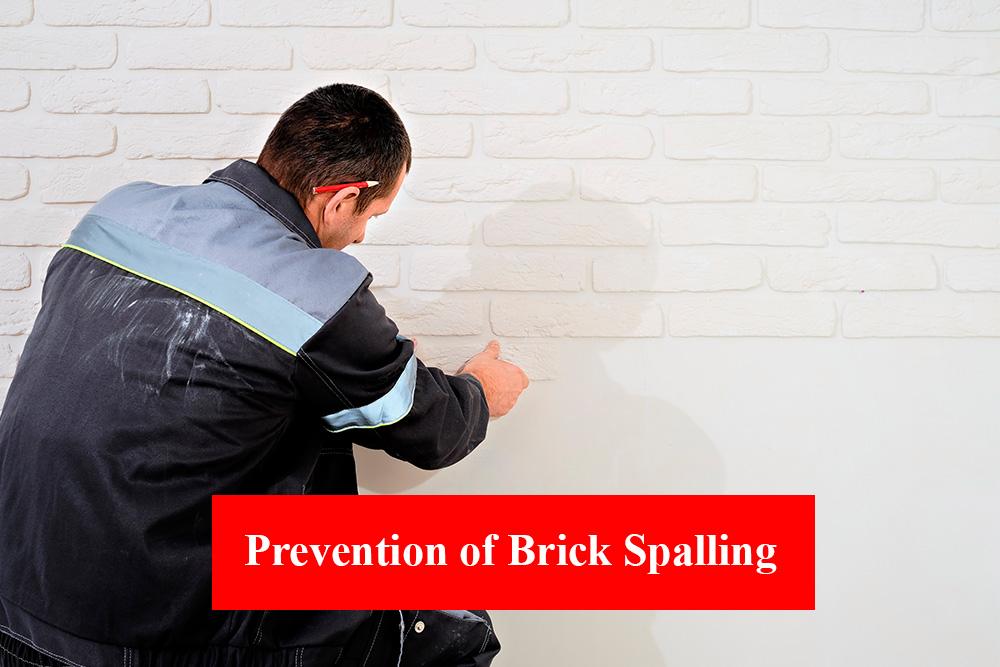
Spalling, or crumbling brick, is typically the result of the freeze and thaw cycle where moisture is trapped in the brick’s pores and expands as it turns to ice. Spalling begins as small fissures that become bigger cracks until the entire brick weakens and begins to crumble. This can begin with the surface of the brick flaking off, the brick popping out of place, or the entire brick deteriorating. Spalling brick is more predominant in colder climates that get a lot of precipitation, like the northeastern United States, and leads to water intrusion into the building. However, spalling can occur even in drier climates due to leaking around the window frame and roof flashing. Aside from the weather, spalling can also unintentionally be caused by incorrect pressure washing or sandblasting and poor construction methods. If left untreated, spalling will only increase and compromise the overall integrity of the building.

The quality of the brick and mortar construction and craftsmanship all contribute to brick spalling. Poorly compressed mortar prevents the bricks from expanding during the freezing weather, and too porous bricks allow moisture to seep in. Cleaning methods like pressure washing and sandblasting will make masonry look bright and clean. However, if done improperly, these procedures can cause micro fractures in the substrate, leading to spalling. This is why this type of work is best left to experienced and reputable commercial masonry contractors. Additionally, using salvaged bricks to save money will almost always result in more expense later on as old bricks will begin spalling sooner than new high-quality bricks.

Dangers of Spalling Bricks
Crumbling masonry is far more than just a cosmetic problem. Deteriorating bricks are a safety risk to people both in and outside the building. These dangers can include:
- Health risks caused by mold from water infiltration.
- Structural collapse.
- Damage to other parts of the building.
Water infiltration results in mold rapidly spreading to surrounding areas and creating significant health risks. By nature, brickwork is designed so that each brick supports the adjacent ones. Once bricks begin to spall, it increases the risk that the surrounding bricks will also begin to fail. If just one or two bricks begin to spall, the entire structure will weaken and lead to possible collapse. Water infiltration can cause damage to the internal framework, such as studs, drywall, and boards. Not only is spalling a safety hazard, if not addressed in a timely manner, but it can also result in larger repair bills the longer it is left unchecked.

Spalling Bricks Prevention
The most important step in the prevention of brick spalling is keeping water from infiltrating the masonry, and this is best accomplished with the following multi-pronged approach:
- Installing an effective drainage system to move water away from masonry structures is critical to keep standing water from infiltrating the pores in bricks and mortar. Exposed areas around foundations exposed to soil should be closely monitored, and gutter systems should be put in place and be regularly maintained to keep runoff away from brickwork.
- Installing a chimney cap will help keep water from getting inside the chimney.
- Avoid high-pressure washing techniques on brick as the force can create micro-fractures, force water into the fissure, and make the brick susceptible to further water infiltration.
- Inspect bricks and mortar for larger cracks and other signs of damage and deterioration. Call a brick and stone masonry restoration specialist if you find any issues.
- Trim back vines as they can trap moisture against masonry.
- The proper application of sealants is one of the best ways to prevent water intrusion.
Sealants
Some more minor leaks around casings can be solved easily with a waterproofing sealant, such as caulk. Mild spalling can often be stabilized by applying a sealer, but more serious deterioration will have to be repaired. However, sealing bricks may not necessarily address the underlying cause, and it is essential to understand that not all sealants are created equal. For example, applying a non-breathable sealant will not allow trapped water to escape and can end up causing the very damage you are trying to prevent. (Read on how to know if your brick needs tuckpointing)
People have been led to believe that applying a non-breathable sealant will help prevent water intrusion into masonry, but that’s not necessarily true. Because of their naturally porous nature, bricks are very good at absorbing and expelling water. However, when non-breathable sealants are applied over masonry, it prevents the brick from breathing and causes water to remain trapped inside the brick. On the other hand, breathable sealants contain microscopic particles that fill in the pores in bricks and prevent water infiltration. Splashing water on masonry could show if a sealer has been applied if the water beads up, but it won’t tell you if a breathable or non-breathable sealant was used.

Repair For Spalling Bricks
While repairing spalling bricks may be a project a do-it-yourselfer may be able to undertake, provided the damage is not too severe, serious water damage will require professional intervention. However, without the proper experience, repairing spalling brick is a job best left to professionals. Additionally, an experienced commercial mason will also be able to determine if larger problems are looming that can be addressed before more extensive and expensive damage occurs.
Discovering the Cause of Damage
The first step in repairing spalling bricks is diagnosing the problem by thoroughly examining the entire structure to find where the problems lie. Finding more than a few bricks that need replacing indicates multiple problem spots. It is best to call a professional as there is likely more structural damage than is readily visible. Once the cause has been determined, damaged bricks are removed with a club hammer and cold chisel. The old mortar is then scraped out of the cavity with the hammer and chisel or loosened with a masonry drill bit. Care must be used so the surrounding bricks are not damaged. Matching bricks, mortar, and masonry styles is essential to make the repair as invisible as possible. Mortar is added, the bricks are set in place, and more mortar is added around the edges in a procedure known as “pointing”. This process requires both skill and experience to make the repair solid and look right. Once the repair is complete, a breathable sealant can be applied to help prevent future water damage.
It is best to address spalling brick as soon as possible as the problem will only worsen if left unchecked. Even if there is no apparent damage, buildings with commercial masonry should be inspected once a year at a minimum by a commercial masonry expert. This is doubly true in areas where rain, fog, and especially freezing temperatures regularly occur. If you need brick, stone, or mortar joint repair in Minneapolis or St. Paul, the team at Epic Restoration provides a full range of commercial masonry services and employs the most up-to-date commercial repair methods to both preserve and protect your commercial masonry. Epic has years of experience in commercial property evaluation and consultation, chemical cleaning, brick and stone restoration, and commercial masonry sealing. Call them today at 1-612-353-4646 or visit them online at epicmasonryrestoration.com to schedule a consultation.
